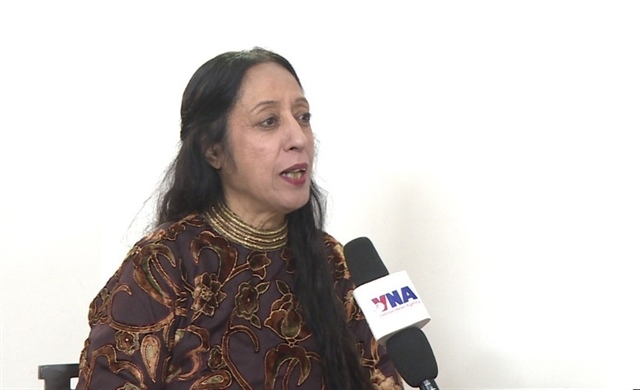Keeping sea swifts for nests in the Central Highlands of Vietnam
Keeping sea swifts for nests in the Central Highlands of Vietnam
Keeping swifts to produce edible nests as a delicacy is now possible in the Central Highlands of Vietnam, not only in the traditional high cliffs along the coast as usual.
Ayun Pa Town in Gia Lai Province is a pioneer of the movement in the central highland locality. Some farmers in the province started keeping swifts in 2010 and now it has over a dozen families with facilities to lure the birds in to make nests.
To attract the birds, farmers have built closed houses, with only holes high in the walls acting as entrances for the swifts.
The houses are well equipped with different kinds of machines to spray water and create wind and moisture, as well as speakers to emit the singing and cries of the birds to attract them to make nests in those houses.
On average, each house has a thousand pairs of swifts to make nests.
The birds have transformed Ayun Pa from ‘a fire valley,’ due to its high temperatures, into an ‘attractive land of birds.’
A farmer named Toan admitted that, “It is quite easy to earn money in this field.” He is considered one of the first men to start keeping swifts for nests in the Central Highlands region.
He added that he had to carry speakers around the Ayun Pa valley during the initial days in 2010 to lure swifts.
Several weeks later, dozens of swift couples flew to his house and started making nests.
After some couples entered to probe the building, a series of other birds rushed in, he said.
Nguyen Van Xuan, the owner of three of the biggest ‘swift houses’ in Gia Lai, said he now has flocks of swifts reaching 8,000 birds, even though he only joined the industry three years ago.
Costly investment
Most swift keepers admitted they need two vital keys to achieve success, including having enough money to invest in facilities to attract swifts and spending time learning about techniques to keep the birds from moving to other places.
“I have to build a big garden with many trees around swift houses to create a suitable environment for the birds.
“Only I, my wife, and some of my relatives are allowed to enter the swift houses to prevent noise from badly affecting the birds.
“Strangers are not permitted to access the houses,” said farmer Xuan.
Nguyen Thi Loi, Xuan’s wife, recalled the initial days when she and her husband had to endure sleepless nights to protect the swifts and their nests.
On average, it costs no less than VND1 billion (US$46,400) to build and equip each swift house, Loi said.
“We were very happy to see the first swift couples make nests and lay eggs in our house. But after a night, they disappeared,” she recounted.
“We watched and discovered geckos sneaking in at night to eat both the eggs and nests,” she added. “We had to install electric grids to prevent the reptiles from destroying our business.”




















